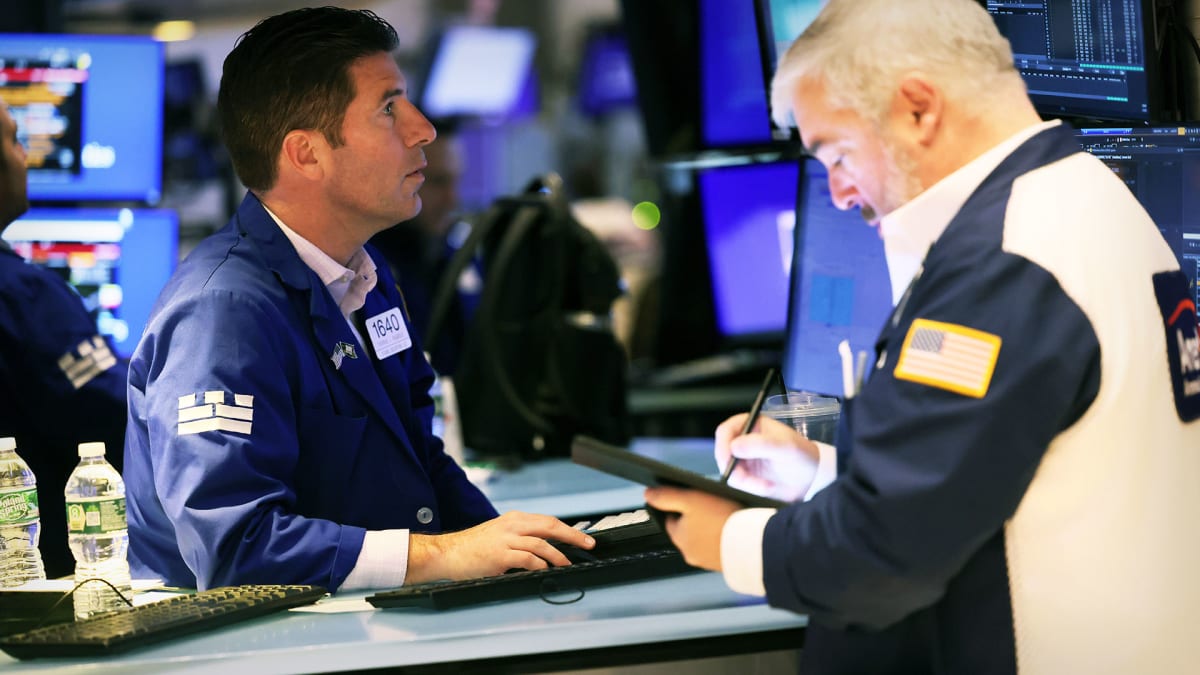
The Federal Reserve isn't likely to dial-back its rate hike plans anytime soon, markets suggest, following a series of stronger-than-expected earnings from the banking sector that indicate solid consumer spending and limited blowback from last month's collapse of Silicon Valley Bank.
Morgan Stanley (MS) CEO James Gorman told investors that while there may be "a crisis in some banks, we are not in a banking crisis" after the investment bank and wealth manager posted better-than-expected first quarter earnings Wednesday, adding that the current stresses were not "remotely comparable to the 2008 financial crisis.
His comments were echoed Tuesday by Goldman Sachs (GS) CEO David Solomon, who told investors he thinks the worst of the banking sector volatility witnessed last month "is behind us" after the group posted better-than-expected first quarter earnings that were marred by a slump in deal making fees at its investment banking division.
Bank of America (BAC), meanwhile, said that while it continues to forecast a mild recession in the world's biggest economy, 'consumers' financial positions remains generally healthy ... they're employed with generally higher wages, continue to have strong account balances, and have good access to credit."
The outlook, while not overtly bullish, is nonetheless notably more optimistic than during the wake of the SVB Financial collapse, when banks tapped the Federal Reserve for emergency loans and investors worried that a follow-on credit crunch would stifle growth and tip the economy into a damaging recession.
- Stocks Priced For Perfection But Earnings Recession Looms As Q1 Profits Shrink, Growth Outlook Darkens
Since then, however, markets have digested a host of solid economic signals, including some sticky March inflation figures, robust March job gains, some better-than-expected housing data and a bounce-back in manufacturing activity in the New York region.
That's helped stocks climb to their highest levels of the year, with the S&P 500 now within 35 points of its early February peak and the Dow Jones Industrial Average riding its longest weekly winning streak since October.
It's also reignited a notable move higher in Treasury bond yields, with benchmark 2-year notes rising to 4.263% in early New York trading and 10-year notes touching 3.627%, as traders bet that the Fed will no longer be able to rely on the banking sector to augment its ongoing battle to bring inflation closer to its preferred 2% target.
Short-term yields are spiking, as well, with 3-month Treasury bills trading at around 5.208%, the highest since January of 2001 and more than 40 basis points higher since the beginning of the month.
Fed Maintains Inflation Fight
St. Louis Federal Reserve President James Bullard told Reuters yesterday that he favors a Fed Funds rate in the region of 5.5% and 5.75%, a level that would require two more rate hikes, while Atlanta Fed President Raphael Bostic told CNBC he would like to see at least one more increase in order to extend the Fed's inflation fight.
Inflation concerns were also back in focus following data from the United Kingdom showing consumer prices rose 10.1% in March, a figure that eased from the record-high 11.1% print in February but still leaves Britain as the only western European country with a double-digit inflation rate.
The CME Group's FedWatch suggests an 83.4% chance that the Fed will raise its benchmark interest rate by 25 basis points, to a range of between 5% and 5.25%, next month in Washington, up from just 21% this time in March.
Bets that the Fed will hold that rate in place throughout the summer, as well, are also on the rise, with only a small chance of reversing the longest run of policy tightening in a generation before the central bank meets in September.
Curiously, however, global investors are still convinced the Fed will have little choice but to cut rates in the fall as the economy weakens, inflation slows and unemployment spikes.
Bank of America's closely-tracked Fund Managers' Survey for the month of April shows the highest proportion of respondents looking for near-term rate cuts since November of 2008, with most expecting the Fed to being its easing cycle in the first quarter of next year.
Correspondingly, allocations to bonds are at the highest since March of 2009, with fund managers the most overweight fixed income -- when compared to stocks -- in more than fourteen years.
Growth Outlook Darkens
Jeffery Roach, the chief economist for LPL Financial, notes that small businesses in the U.S. are finding it harder to get credit in the wake of the Silicon Valley Bank collapse, adding that the number of firms with near-term expansion plans is the lowest since 2009.
"Businesses appeared to hunker down under the weight of tighter credit conditions and weaker economic growth," Roach said. "If small businesses are an accurate barometer, recession risks are rising and the labor market will likely cool in the coming months."
Corporate earnings guidance is beginning to reflect that concern, with around 81 companies issuing negative earnings preannouncements heading into the reporting season, compared to 26 positive ones. And the overall earnings-growth estimate has fallen 3.3% since the beginning of February.
Revenue growth has also been muted, with two-thirds (66.7%) of reporting companies topping Refinitv sales estimates, compared with the 71% pace recorded over the previous four quarters.
That suggests that as inflation pressures ease, revenue growth will slow in tandem, adding to pressures on profit margins for companies that don't cut costs or trim their workforces.
"Although the economy is slowing, the Fed continues its fight with inflation and will likely hike rates at the next meeting on May 2-3," said LPL's Roach. "However, if the economy becomes more unstable, the Fed could pivot to rate cuts by the end of the year."







